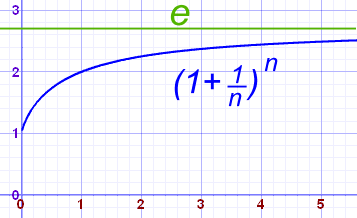Fractal patterns inside e..................the below is the 1st 16 numbers of e........like 17/16 from Euler's product........using the zero d...............17 + 16 = 33...............like 1/3.........from the harmonic s......1/3 = 0.3333..............................sig b/c the last 6...........6 being the 1st perfect number..............the 1st perfect number is 6....7/6..........from Euler's p.....with an s of 1..........the block of 6 number..............................the last 6 of the 1st 16..............is the same a a right triangle....................a 45/45 degree triangle..........whose two lesser sides.............are both 1.........and whose hyp is the square root of 2..........a 2 and an eleven...............1 and 1 .......put together.........like 2 - 11.....added end to beg........u get 5 13's..........13 is the 6th prime..................
2.718281828459045
459045
e (Euler's Number)

The first few digits are:
2.7182818284590452353602874713527 (and more ...)
It is often called Euler's number after Leonhard Euler (pronounced "Oiler").
e is the base of the Natural Logarithms (invented by John Napier). e is found in many interesting areas, so it is worth learning about.
Calculating
There are many ways of calculating the value of e, but none of them ever give a totally exact answer, because e is irrational (not the ratio of two integers).But it is known to over 1 trillion digits of accuracy!
For example, the value of (1 + 1/n)n approaches e as n gets bigger and bigger:

| n | (1 + 1/n)n |
| 1 | 2.00000 |
| 2 | 2.25000 |
| 5 | 2.48832 |
| 10 | 2.59374 |
| 100 | 2.70481 |
| 1,000 | 2.71692 |
| 10,000 | 2.71815 |
| 100,000 | 2.71827 |
No comments:
Post a Comment